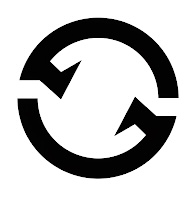When you think of an organizational chart, what comes to mind? Probably the usual hierarchical structure with names and titles neatly arranged in boxes, right? While this traditional approach has served its purpose for decades, it often falls short in today’s dynamic and evolving workplace. The problem? It focuses too much on titles and names instead of the actual roles and responsibilities that drive value within an organization.
Titles are just labels. They might look nice on business cards, but they rarely tell the full story of what someone actually does. In Agile environments, where adaptability, collaboration, and flexibility are key, designing an org chart around roles and responsibilities, rather than titles and names, makes far more sense.
Let’s dig into why this shift is critical and how you can rethink your org chart to better align with your organization’s goals.
The Problem with Title-Based Org Charts
Traditional org charts often reflect a rigid hierarchy, where titles are the primary focus. The C-suite sits at the top, followed by VPs, Directors, Managers, and so on. Each box has a name and a title, and that’s supposed to tell you everything you need to know about that person’s role.
But here’s the catch: titles are often misleading. One person’s “Manager” could be another’s “Director.” In some organizations, a “VP” might have hands-on responsibilities, while in others, they could be purely strategic. Titles don’t always convey the actual value or contributions someone brings to the table.
This focus on titles can lead to several issues:
- Misalignment of Roles and Responsibilities: The title “Product Manager” may suggest oversight of a product’s lifecycle, but the actual role might involve anything from technical project management to business analysis. This misalignment creates confusion about who does what.
- Lack of Clarity: When the focus is on titles, it can be hard to understand the real responsibilities of each person. How does “Director of Innovation” contribute to day-to-day operations? How does a “Senior Analyst” differ from a “Lead Analyst”?
- Rigid Hierarchies: Title-based org charts often reinforce a top-down structure that limits flexibility. In Agile organizations, where collaboration across levels is essential, this rigidity can stifle innovation and slow down decision-making.
Titles are static, but work is dynamic. We need a new way of thinking that better reflects the reality of today’s work environment.
Shifting to Role-Based Org Charts
Now, imagine an org chart that’s designed around roles rather than titles. Each box represents a set of responsibilities, rather than a person with a particular title. This approach provides clarity on who does what and why they do it. It helps align resources with the organization’s goals, rather than simply mirroring a hierarchy.
Here’s why this shift matters:
- Focus on Value Creation: When you design an org chart around roles, the focus shifts from hierarchy to value creation. What are the key roles that drive your organization’s success? Who is responsible for delivering on those critical outcomes? By centering the chart around these questions, you ensure that the structure supports your strategic objectives.
- Agility and Adaptability: In an Agile environment, roles need to evolve as the organization’s needs change. A role-based org chart allows for greater flexibility, as roles can be adjusted or redefined without the need for a major organizational overhaul. This adaptability is key in today’s fast-paced business world.
- Clarity in Roles and Responsibilities: A role-based org chart makes it clear who is responsible for what. This clarity helps prevent duplication of effort, reduces confusion, and ensures that everyone understands their role in the organization’s success.
- Better Collaboration: By focusing on roles rather than titles, you encourage collaboration across levels. People are less likely to get caught up in the politics of hierarchy and more likely to focus on working together to achieve shared goals.
Designing a Role-Based Org Chart
So, how do you go about designing a role-based org chart? Here’s a step-by-step guide:
- Identify Key Roles: Start by identifying the key roles within your organization. Think about the responsibilities that are critical to your success. What roles are essential to delivering value to your customers? What roles are needed to support your internal operations?
- Define Responsibilities: Once you’ve identified the key roles, define the responsibilities for each role. Be specific. What outcomes are each role accountable for? What skills and capabilities are needed to fulfill these responsibilities?
- Map Roles to People: After defining the roles and responsibilities, map them to people in your organization. Remember, this isn’t about fitting people into boxes based on their titles; it’s about aligning the right people with the right responsibilities.
- Build Flexibility: One of the key advantages of a role-based org chart is its flexibility. Make sure your chart is designed to evolve as your organization’s needs change. Roles may need to be redefined, added, or removed over time, so build in the ability to adjust the chart as needed.
- Communicate and Collaborate: Finally, communicate the new org chart to your team and encourage collaboration. Help your team understand that the focus is on roles and responsibilities, rather than titles and hierarchy. Encourage open communication and collaboration across roles.
Real-World Examples
Let’s look at a couple of examples where organizations have successfully shifted to role-based org charts.
Example 1: Spotify’s Squad Model
Spotify is known for its unique approach to organizational structure, which emphasizes roles over titles. In their “Squad Model,” small, cross-functional teams (called squads) are responsible for delivering specific outcomes. Each squad has all the roles needed to achieve its goals, including developers, designers, and product managers. Titles are less important than the roles each person plays in delivering value to the customer.
This role-based structure has allowed Spotify to remain agile and innovative as they’ve grown. By focusing on roles rather than titles, they’ve created a flexible and adaptable organization that can quickly respond to changing customer needs.
Example 2: Zappos’ Holacracy
Zappos, the online shoe retailer, experimented with a management system called Holacracy, which emphasizes roles over titles and hierarchy. In Holacracy, roles are defined based on responsibilities, and people can hold multiple roles within the organization. This approach allows for more flexibility and better alignment with the organization’s goals.
While Holacracy isn’t for everyone, it demonstrates how a role-based approach can provide greater clarity and flexibility in an organization.
Conclusion
The way we design org charts needs to evolve to reflect the realities of today’s work environment. Titles are outdated and often fail to capture the true value that people bring to an organization. By shifting to a role-based approach, you can create a more agile, adaptable, and effective organization that’s aligned with your strategic goals.
Designing an org chart around roles rather than titles helps clarify responsibilities, encourages collaboration, and ensures that your structure supports the value you’re trying to create. So, the next time you’re updating your org chart, ask yourself: are you organizing around titles, or are you organizing around the work that truly matters?





